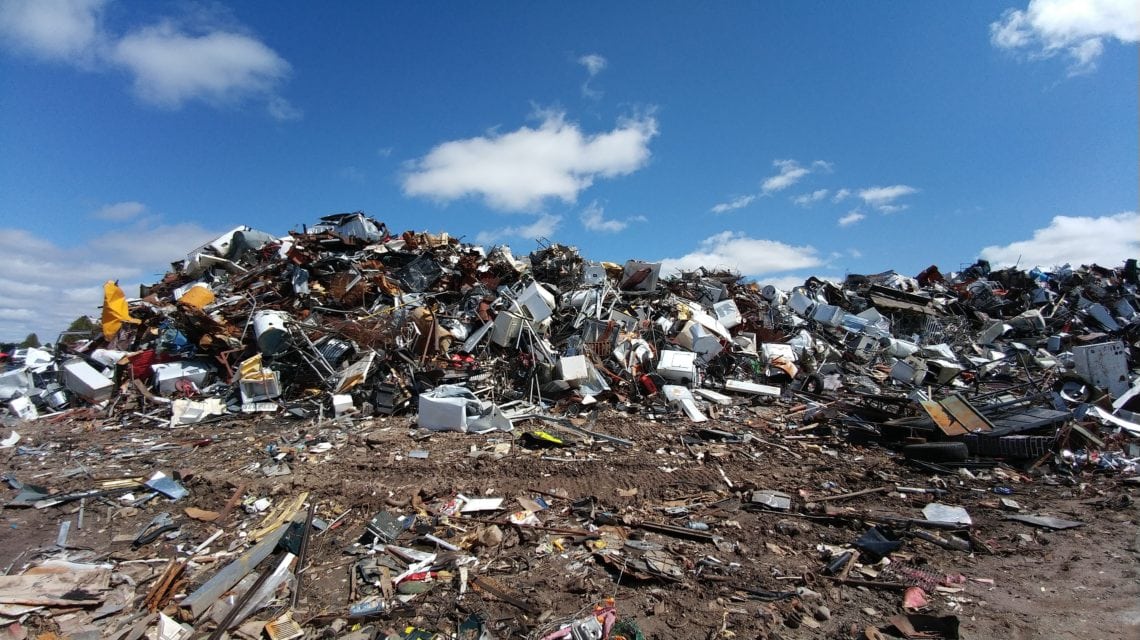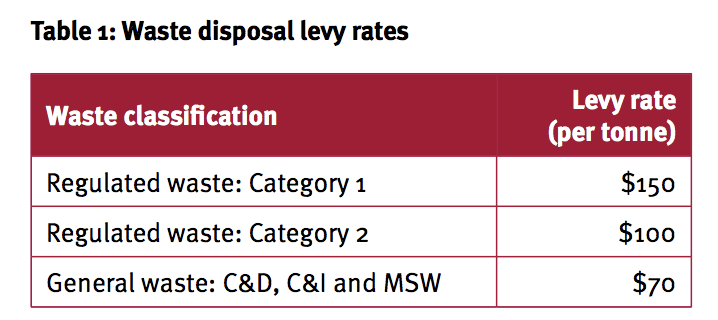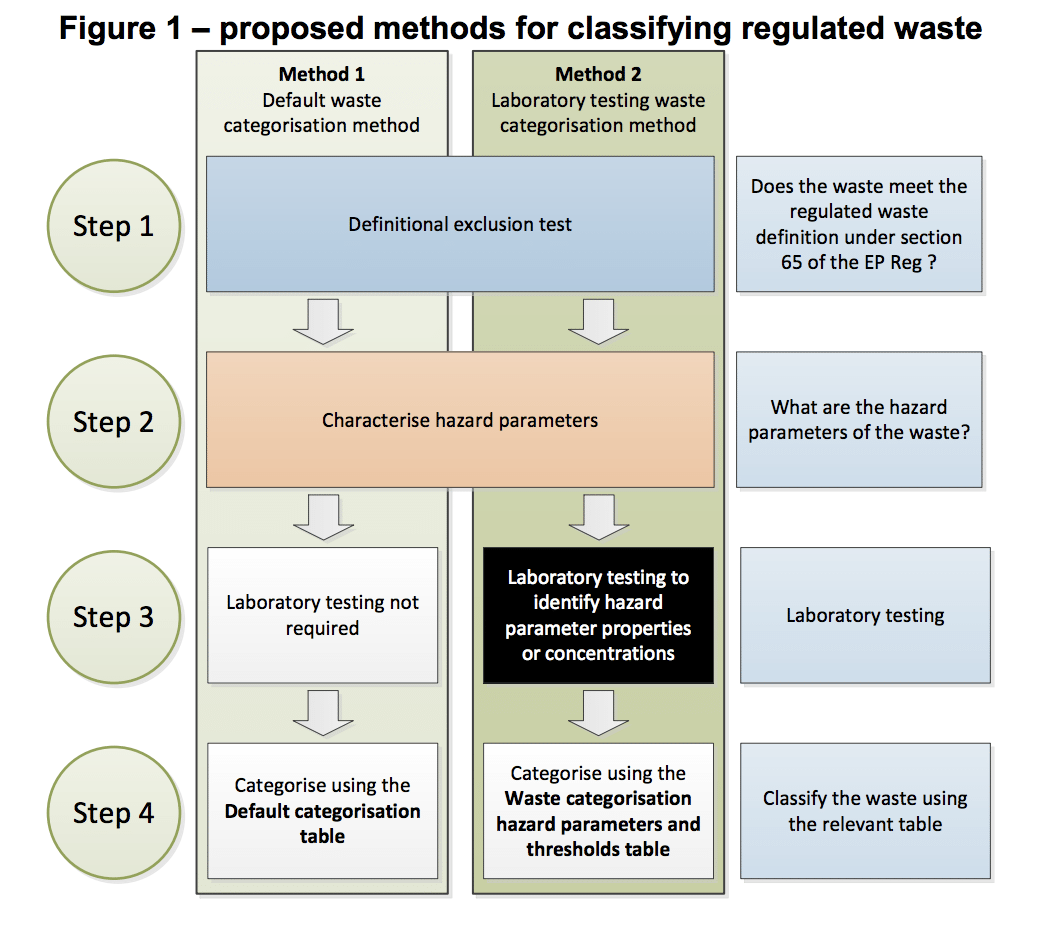The Queensland government is introducing a $70 per tonne (and up to $150 per tonne for highly contaminated materials) waste levy to discourage both state and interstate companies from sending their rubbish to the state’s landfills.
The QLD waste levy, effective from 1 January 2019, will bring Queensland into line with other states who charge waste levies for the same reason. Acting Premier Jackie Trad promised that the state government would help fund council’s costs relating to the levy so that they would not pass the cost on to QLD ratepayers.
The QLD government hopes that the waste levy will encourage recycling and help QLD move towards a circular economy, where products would be recycled until their resources were exhausted. Proceeds from the QLD waste levy will go toward supporting local business and industry to increase their recycling efforts and also to environmental management and improvement.
Contaminated soils that fall under the category one or two classifications will incur a higher QLD waste levy of between $100 and $150 per tonne. The QLD government hopes that this increased rate will make innovative approaches including onsite treatment to contaminated soil disposal more economically viable to property owners and developers. Transferring the problem of contaminated soil and groundwater to a landfill does not provide a benefit in terms of reduction of contamination, and modern innovative treatments and remediation strategies may now be more affordable than transport and disposal of contaminated materials to landfill.
Four regulated waste categories are proposed (in order of decreasing risk): category 1, category 2, category 3, and the not regulated waste category. These categories and guidance is in draft in the Proposed Regulated Waste Classification Guidelines, and has largely been based on Victorian EPA guidelines, including those outlined in Table 2 in IWRG621.
The Queensland levy rates will increment at $5 per year over the next four years to continue to incentivise change in material recovery, recycling and waste disposal behaviours and practices.
A four step classification process is proposed:
Step 1 – definitional exclusion test
The definitional exclusion test is common to both classification methods and tests whether the waste can be classified as a regulated waste against the regulatory definition for ‘regulated waste’.
This is in draft form, but will likely be a referral the compounds listed in Tables 1, 2 and 3 in the draft waste guidelines.
Step 2 – Characterising the hazard
This can be done using the following approaches:
- assess the process that generated the waste, including specific input materials and output chemicals/products;
- use literature and published information about the process or waste (including Safety Data Sheet information) relevant to inputs and outputs;
- use specialist company knowledge or expertise from industry associations that may assist in focusing on the hazard parameters likely to be present; or
- test the waste at a laboratory.
Under the proposed framework the generator is expected to characterise and classify the waste. This is because the characterisation process relies on knowledge about the source of the waste.
This is in draft form, but will likely include referral the compounds listed in Table 2 in the draft waste guidelines.
Step 3 – Test for hazard parameters
Method 1 (no laboratory testing required)
Users of method 1 will use default waste categories and proceed directly to Step 4 – Waste categorisation.
Method 2 (undertake laboratory testing)
The relevant testing methods for each of the hazard parameters shown in Table 1 – Waste categorisation hazard parameter and thresholds are:
1. the total concentration of the hazard parameter;
2. the leachable concentration of the hazard parameter (using the Australian Standard Leaching Procedure (ASLP) test); and
3. the value of the hazardous property (using pH)
When testing, total concentrations should be determined first as this may avoid the need to do leachability testing. For example, where the total concentration is less than 20 times the leachable hazard threshold, ASLP testing will not be required.
Step 4 – Waste categorisation
Method 1 – ‘Default waste category’ method for classifying waste
The characterised waste is identified against the default waste categorisation table (see Table 2) and the corresponding default category assigned. Proposed default waste categories are listed in Table 2 in the draft waste guidelines.
Method 2 – ‘Waste categories table’ method for classifying waste
Following the laboratory testing undertaken in step 3 the results are then used to classify the waste against the hazard parameters and thresholds as shown inTable 1 in the draft waste guidelines. – Waste categorisation hazard parameters and thresholds to determine whether the waste is a category 1, 2 or 3 regulated waste or a category NR (not regulated) waste.
Many wastes require tracking under Queensland law, as defined in Schedule 2E of the Environmental Protection Regulation 2008, which in many cases can be undertaken online at https://www.qld.gov.au/environment/pollution/licences-permits/connect.
Ahead of the QLD waste levy introduction, it is possible that the state could see a surge in interstate contaminated waste dumping before it becomes more expensive and difficult to manage, as companies try to avoid the incoming levy.
If you need a cost-effective method of contaminated soil and water management, and the latest regulatory advice for compliant management of contaminated materials contact us at [email protected] or 13000 43684 (13000 iEnvi).



